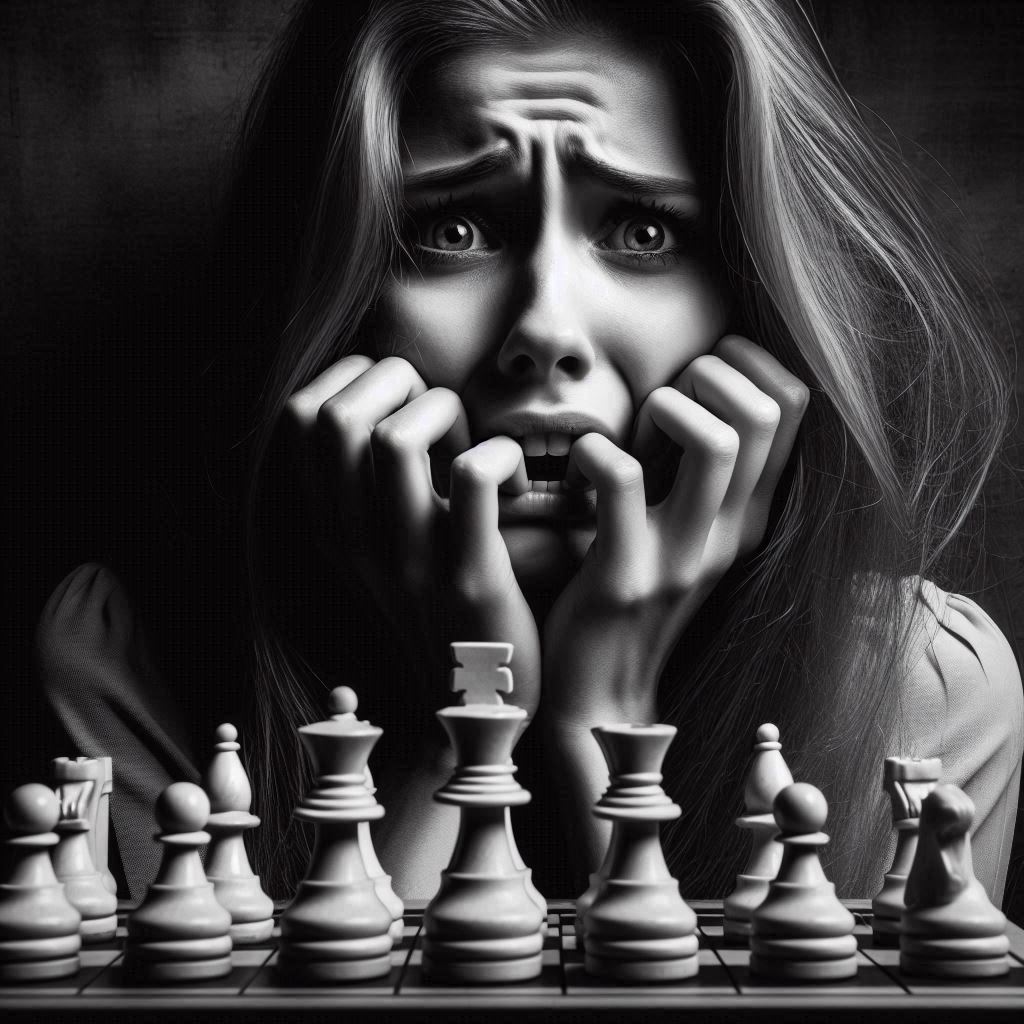Imagine waking up every day with a fear so intense, it keeps you locked indoors. This is the daily reality for those who suffer from heliophobia, a rare but impactful phobia characterized by an irrational fear of sunlight. While it might seem unusual to be frightened by the thing that sustains life on Earth, heliophobia can deeply affect one’s quality of life.
People with this condition often avoid outdoor activities, leading to isolation and, in some cases, vitamin deficiencies due to lack of sunlight exposure. They might feel anxious even at the thought of getting some sun. Understanding heliophobia is crucial because it’s not just about avoiding the sun; it’s about understanding how such fears shape everyday existence.
What is Heliophobia?
Heliophobia is more than just a dislike for sunny days. It’s a specific phobia that involves an intense and irrational fear of the sun or sunlight. People with heliophobia often take extreme measures to avoid any exposure to sunlight, affecting both their psychological and physical health. This section will delve into what heliophobia really means, how it manifests, and why understanding it is important.
Defining Heliophobia
Heliophobia can be defined as an extreme, irrational fear of the sun or bright light. This isn’t a simple dislike or avoidance of sunburn; it’s a deep-seated anxiety that can lead to significant lifestyle changes. People might routinely avoid going out during the daytime or employ drastic measures to shield themselves from any exposure.
Heliophobia can affect anyone, but it’s more common in individuals with other anxiety disorders or previous traumatic experiences related to the sun. This phobia often showcases its symptoms through anxiety attacks, heart palpitations, and a strong desire to escape from sunlight-exposed environments.
Symptoms of Heliophobia
Recognizing heliophobia involves paying attention to various anxiety-related symptoms when in the presence of sunlight or thinking about exposure:
- Intense anxiety or panic attacks
- Rapid heartbeat or palpitations
- Nausea and dizziness
- Excessive sweating
- Full-blown panic attacks
These symptoms are not just bothersome; they can be debilitating. They often result in the person making significant lifestyle adjustments to avoid these anxiety-inducing triggers.
Causes Behind Heliophobia
Understanding the causes of heliophobia can shed light on why it occurs. Some possible reasons include:
- Traumatic past experiences: Individuals who have had bad experiences with sunlight, such as severe sunburns or heatstrokes, might develop this phobia.
- Psychological factors: Existing anxiety disorders can make someone more susceptible to developing additional phobias, like heliophobia.
- Cultural and environmental factors: In some cultures, pale skin is highly valued, which may inadvertently encourage an avoidance of the sun.
The Impact on Quality of Life
Living with heliophobia is not just a matter of staying indoors. The avoidance of sunlight can lead to an array of health problems including:
- Vitamin D deficiency: Essential for bone health and immune function.
- Emotional isolation: Missing social events and activities that occur outdoors can result in loneliness and depression.
- Physical inactivity: Avoiding sunlight often means limited participation in outdoor exercises, contributing to a sedentary lifestyle.
The consequences compound, making it a significant disorder that machinery beyond simple avoidance.
Heliophobia is a complex condition, but understanding its full scope – from definition to impact – is the first step in addressing and managing it. More discussions on coping mechanisms and treatment options are essential for anyone dealing with this phobia.
By knowing more about heliophobia, we can develop compassion and practical strategies for those affected.
Symptoms of Heliophobia
Heliophobia, the fear of sunlight, can be distressing and encompass a wide range of symptoms that can deeply affect an individual’s daily life. These symptoms can be both physical and psychological, manifesting strongly whenever the person is exposed to sunlight or even at the mere thought of stepping outside.
Physical Symptoms
When people with heliophobia encounter sunlight, their bodies can react in several uncomfortable ways. These physical symptoms are often the immediate response and can include:
- Sweating: One of the body’s natural responses to stress, excessive sweating can happen even with minimal sun exposure.
- Rapid heartbeat: The fear of being in light can trigger a significant increase in heart rate, often making people feel overwhelmed.
- Nausea: Feeling nauseous or uneasy in the stomach can result from anxiety around sunlight exposure.
- Dizziness or lightheadedness: Being in the sun may lead to feelings of being unsteady or faint.
- Shortness of breath: The fear response can cause heavy breathing or a sense of not getting enough air.
- Skin reactions: Sometimes the fear can be so severe, people may experience real or perceived skin irritation or burning.
These symptoms overlap significantly with general anxiety responses but are specifically triggered by sunlight, making even small exposures intolerable.
Psychological Symptoms
The psychological impact of heliophobia is equally concerning and can greatly impact mental health and daily routines. Some common psychological symptoms include:
- Intense anxiety: Even thinking about going outside can cause overwhelming feelings of fear.
- Panic attacks: Severe fear of sunlight can lead to full-blown panic attacks, characterized by shaking, crying, and an intense need to escape.
- Avoidance behavior: To avoid the panic and discomfort, people might go to great lengths to stay indoors, often darkening their homes and avoiding daytime activities.
- Fear of leaving the house: The worry about encountering sunlight can make even necessary trips outside feel impossible.
- Social isolation: Missing out on social events and normal activities can lead to feelings of extreme loneliness and depression.
These psychological symptoms feed into each other, creating a cycle that can be difficult to break without professional help. Understanding these symptoms is a crucial step toward effective treatment and support for those suffering from heliophobia.
For more insight into heliophobia and its consequences, check out Mind Help, a comprehensive resource that dives into the fear of sunlight and ways to manage it.
For additional information on the symptoms and how they can impact daily living, visit lybrate and Phobia Solution, which provide detailed insights into understanding heliophobia.
Causes of Heliophobia
Heliophobia, the fear of sunlight, can stem from various causes. Understanding these underlying factors can help explain why some people develop this condition. Here, we dive into genetic, environmental, and psychological contributors to heliophobia.
Genetic Factors
Sometimes, the fear of sunlight runs in families. If a relative has a phobia or anxiety disorder, it might increase your chances of developing heliophobia. Just like having a parent with a fear of heights may make you more likely to fear heights, genetics can play a role.
Research suggests that phobias can be inherited, particularly if there are other anxiety disorders in the family. It’s not only about genes but also the environment you grow up in. Observing a parent’s fear or aversion to sunlight can reinforce similar behaviors in children. For a deeper look into the genetic aspects of phobias, visit Mind Help.
Environmental Triggers
Heliophobia can also develop from specific experiences related to sunlight. For example:
- A severe sunburn during childhood can leave a lasting impact.
- Experiencing a heatstroke might create a strong, negative association with the sun.
- Witnessing or hearing about sun-related health issues can instill fear.
These traumatic encounters might make sunlight seem dangerous or threatening. For instance, if someone experienced a painful sunburn that resulted in blisters and required medical treatment, they might start to associate sunlight with intense pain. Over time, this anxiety can evolve into a full-blown phobia. For further insights, you can explore resources like Phobia Solution.
Psychological Influences
Heliophobia is not just about the sun. It often intertwines with broader psychological struggles. People with pre-existing anxiety disorders or other mental health issues, such as depression or generalized anxiety disorder, might be more prone to developing heliophobia.
Here are a few psychological influences:
- Anxiety Disorders: If someone already has an anxiety disorder, they might be more susceptible to developing additional phobias.
- Obsessive-Compulsive Disorder (OCD): Individuals with OCD may develop heliophobia as part of their compulsive need to control their environment.
- Post-Traumatic Stress Disorder (PTSD): Previous traumatic events involving the sun can lead to PTSD, which may include heliophobia as a symptom.
Psychological factors can significantly compound the fear, often requiring professional intervention to manage. Interested in learning more about the mental health aspects of heliophobia? Check out this comprehensive guide from Klarity Health.
Heliophobia is more than just a fear of the sun. It’s a complex condition with roots that span genetics, environmental experiences, and psychological health. Understanding these factors can be the first step toward addressing and managing this phobia effectively.
Complications of Heliophobia
Living with heliophobia presents more than just a strong fear of sunlight; it brings about a host of complications that can significantly affect a person’s life. Avoiding sunlight is not a simple task in our sunlit world, and the consequences of this avoidance can cascade into various aspects of health and well-being.
Physical Health Issues
The human body relies on sunlight for the production of Vitamin D, which is crucial for maintaining healthy bones and a robust immune system. Avoiding sunlight can lead to Vitamin D deficiency, which can result in:
- Bone health problems: Such as osteoporosis and fractures.
- Weak immune response: Making one more susceptible to infections.
Without proper sunlight exposure, maintaining an adequate Vitamin D level might require taking supplements or enriched foods. Nonetheless, this substitution is not always sufficient to fully counter the deficiency.
Mental Health Concerns
The mental strain of living with heliophobia can be profound. Isolation from social activities and outdoor events can contribute to depression and anxiety, further complicating an individual’s mental health landscape. Symptoms can include:
- Persistent sadness or hopelessness.
- Increased anxiety levels.
- Social withdrawal: Missing out on gatherings or events.
These mental health issues often create a vicious cycle, where isolation due to heliophobia exacerbates depression and anxiety, which in turn reinforces the phobia. For more details, you can read about the impact of heliophobia on mental health.
Social Isolation
Avoiding the sun means missing out on social interactions. People with heliophobia might find themselves:
- Skipping social gatherings: Especially those held outdoors.
- Avoiding recreational activities: Such as sports or beach outings.
- Struggling with relationships: Leading to feelings of loneliness and isolation.
This social withdrawal can further contribute to a sense of being detached from friends and family, heightening feelings of loneliness and alienation.
Occupational Challenges
Heliophobia can even interfere with one’s professional life. Here are some ways how:
- Difficulty commuting: Traveling during daylight hours may be extremely stressful.
- Limited job opportunities: Certain jobs requiring outdoor activities may be off-limits.
- Reduced productivity: The constant anxiety about sunlight exposure can decrease work efficiency.
These challenges can restrict career growth and limit job satisfaction, leading to financial instability and reduced self-esteem.
Everyday Life Disruptions
From something as simple as running errands to more significant lifestyle activities, the fear of sunlight can disrupt daily routines. People might find themselves:
- Planning outings meticulously: To avoid peak sunlight hours.
- Relying heavily on others: For tasks that require being outdoors.
- Living in dimly lit environments: Constantly using blinds and curtains to block out the sun.
Such disruptions complicate ordinary life tasks, making day-to-day living unnecessarily challenging.
Sun-Safe Habits Taken to Extremes
While it’s sensible to avoid excessive sun exposure, those with heliophobia might take sun-safety practices to an extreme. For instance:
- Overusing sunscreen: Leading to potential skin issues.
- Wearing excessive clothing: Causing heat stress in warmer climates.
- Avoiding open windows: Missing out on fresh air and ventilation.
These behaviors can themselves lead to additional health issues, both physical and psychological.
Conclusion
Heliophobia is more than just staying out of the sun. It involves managing a multitude of complications that affect physical health, mental well-being, social life, and even professional aspirations. For more information about heliophobia and how to cope with it, you can explore resources like Mind Help which offers insights into the causes and coping strategies for this condition.
Diagnosis of Heliophobia
Given the numerous symptoms and the impact on daily life, diagnosing heliophobia is an essential step toward managing this condition. The diagnosis isn’t always straightforward, but mental health professionals are trained to identify the underlying causes and extent of the phobia.
Role of Mental Health Professionals
The journey to diagnosis often begins with consulting a mental health professional. Psychologists or psychiatrists are typically the experts who handle such cases. They employ various techniques to understand the presence and severity of heliophobia.
- Initial Assessment: The first step usually involves a thorough assessment where the mental health professional asks about the patient’s medical history, personal experiences, and specific symptoms related to sunlight exposure. This conversation helps the professional understand how deeply the fear disrupts the individual’s life.
- Questionnaires and Surveys: Often, professionals use specific questionnaires or surveys designed to gauge the extent of the phobia. Tools like the Fear Survey Schedule may be employed to measure the intensity and frequency of fear-inducing thoughts and behaviors.
Diagnostic Criteria
Diagnosing heliophobia also involves meeting precise criteria defined by mental health guidelines. Experts typically refer to the Diagnostic and Statistical Manual of Mental Disorders (DSM-5), which is extensively used in psychological diagnostics.
Here are some criteria considered when diagnosing heliophobia:
- Persistent Fear: The individual experiences an unreasonable, significant fear of sunlight, which is either anticipated or experienced. This fear is persistent, generally lasting for six months or more.
- Immediate Anxiety Response: Exposure to sunlight consistently provokes an immediate anxiety response, which can manifest as panic attacks or intense fear.
- Avoidance Behavior: Active avoidance of situations where sunlight exposure might occur, such as not going outdoors during the day and staying in dimly lit spaces indoors.
- Interference with Daily Life: The phobia must cause a notable impact on the individual’s ability to function in daily life. This could involve avoiding social engagements, work limitations, or experiencing pervasive anxiety.
Differential Diagnosis
Sometimes, it’s crucial to differentiate heliophobia from other conditions with overlapping symptoms. For instance, some individuals with skin conditions that make sunlight painful might develop a fear which appears similar to heliophobia but has different root causes.
Mental health professionals carefully evaluate any other possibilities, ensuring a comprehensive and accurate diagnosis.
Conclusion
Accurately diagnosing heliophobia involves a combination of patient history, questionnaire assessments, and adherence to specific diagnostic criteria. Mental health professionals play an essential role in distinguishing this phobia from other conditions and shaping an effective treatment plan.
For more in-depth information on diagnosing heliophobia, you might find further insights on DoveMed and Lybrate.
Treatment Options for Heliophobia
Finding the right treatment for heliophobia, the fear of sunlight, is crucial in helping individuals manage and overcome their intense fear. There are several effective options available, ranging from professional therapies to self-help strategies.
Cognitive Behavioral Therapy (CBT)
Cognitive Behavioral Therapy (CBT) is a well-regarded method for treating phobias, including heliophobia. CBT helps individuals challenge and change the negative thought patterns that fuel their fear of sunlight. By addressing these thoughts and gradually altering them, one can reduce the associated anxiety.
- Identification of Fear Triggers: CBT sessions aim to identify the specific thoughts and situations that trigger fear. This focused identification provides a roadmap for tackling the phobia in a structured manner.
- Replacing Negative Beliefs: Through CBT, patients are taught to reframe their irrational fears with more realistic and positive thoughts. For example, understanding that not all sunlight exposure is harmful.
- Behavioral Techniques: Practical exercises and homework are part of CBT, encouraging individuals to face their fear in a controlled and supportive environment.
CBT has shown substantial success in treating heliophobia, as individuals learn to gradually manage and diminish their fear of the sun. More details can be found in this therapy guide.
Exposure Therapy
Exposure therapy is another mainstay in the treatment of heliophobia. This therapy involves gradually exposing individuals to sunlight in controlled amounts, helping them build tolerance and reduce their fear over time.
- Gradual Exposure: The process begins with minimal exposure, such as standing near a window where sunlight is present but not direct. Over time, the exposure duration and intensity increase.
- Desensitization: Repeated exposure in a safe setting helps desensitize the individual to the fearful stimulus, making sunlight less intimidating.
- Supervised Sessions: These sessions are often supervised by a therapist, ensuring that the exposure is gradual and non-traumatic.
Read more about how exposure therapy can aid in overcoming heliophobia in this comprehensive overview.
Medication
Medication can be an essential component in managing the anxiety symptoms associated with heliophobia. While not a cure, medications can provide significant relief, allowing other therapies to be more effective.
- Anti-anxiety Medications: Medications like benzodiazepines may be prescribed for short-term relief during acute phases of anxiety.
- Antidepressants: Selective Serotonin Reuptake Inhibitors (SSRIs) and other antidepressants can help manage the underlying anxiety that contributes to heliophobia.
- Beta-Blockers: These can be used to manage physical symptoms of anxiety, like rapid heartbeat and sweating.
It’s important to consult with a healthcare professional to determine the appropriate medication and dosage. For a detailed discussion on medication options, click here.
Self-Help Strategies
In addition to professional help, there are various self-help strategies that individuals can use to cope with heliophobia. These strategies empower individuals to take control of their fear and manage it in daily life.
- Relaxation Techniques: Practices such as deep breathing, meditation, and progressive muscle relaxation can reduce the overall anxiety levels.
- Routine Building: Setting up a daily routine that includes safe sun exposure times can help desensitize fear over time.
- Support Networks: Talking to family, friends, or joining support groups can provide emotional support and shared coping strategies.
- Positive Self-Talk: Encouraging oneself with positive affirmations and confronting irrational fears directly can be very effective.
These strategies can improve day-to-day management and overall quality of life. For a more detailed list of coping techniques, visit Mind Help.
Each treatment option for heliophobia offers a unique approach to managing and overcoming the fear of sunlight. Combining these methods can often yield the most beneficial results, tailoring the treatment to fit the individual’s needs.
Living with Heliophobia
Living with heliophobia means more than avoiding the sun; it involves navigating daily life with a constant undercurrent of fear. Understanding the factors that help manage this phobia can make a world of difference. This section explores two critical aspects: support systems and healthy habits.
Support Systems
Having a robust support system is crucial when dealing with heliophobia. Imagine trying to climb a steep mountain all alone – daunting, right? Similarly, facing a phobia without any support can be overwhelming.
Why are support systems important?
- Emotional Backing: Friends and family can offer a comforting presence during tough times, providing reassurance and understanding.
- Practical Help: Support systems can assist with day-to-day tasks, especially those involving exposure to sunlight, like grocery shopping or attending appointments.
- Motivation to Seek Treatment: Knowing there are people who care about you can encourage you to seek professional help and keep up with treatment plans.
Joining a support group can also be beneficial. These groups provide a safe space to share experiences and coping strategies with others who understand what you’re going through. It’s like finding a team of fellow mountain climbers who give you tips and lend a hand along the way.
Healthy Habits
Building healthy habits is another layer of defense against the challenges posed by heliophobia. Just like maintaining a strong, healthy body enhances endurance for physical activities, nurturing healthy mind and body habits can bolster resilience against the phobia.
Key habits to adopt:
- Regular Exercise: Physical activity releases endorphins, which can help reduce anxiety and improve mood. Activities like yoga or indoor workouts can be great options since they minimize the need for sunlight exposure.
- Good Nutrition: Eating a balanced diet supports both physical and mental health. Include foods rich in Vitamin D, such as fortified cereals and dairy products, to compensate for reduced sun exposure.
- Adequate Sleep: Quality sleep is essential for mental well-being. Establish a routine that helps you relax and unwind before bed, ensuring restful nights.
- Mental Health Practices: Techniques like meditation, deep breathing exercises, and therapy can significantly help manage anxiety related to heliophobia.
- Balanced Exposure: Gradually exposing yourself to sunlight with proper protection can help reduce fear over time. Techniques such as controlled exposure under medical supervision can be particularly effective.
By building a strong support system and maintaining healthy habits, living with heliophobia becomes more manageable, much like climbing that seemingly insurmountable mountain bit by bit, with plenty of helping hands along the way.
Conclusion
Heliophobia is not just a simple aversion to sunlight—it’s a deeply ingrained fear that can disrupt every aspect of a person’s life. It’s crucial to recognize the signs and seek help if you or someone you know is grappling with this phobia. Treatment options are available, from therapy and medication to self-help strategies, and they can make a significant difference.
Remember, heliophobia is treatable. Don’t hesitate to share your experiences and spread awareness to help others understand and manage this condition. Your story could be the beacon of light someone needs.








